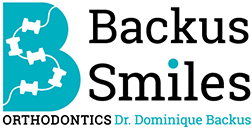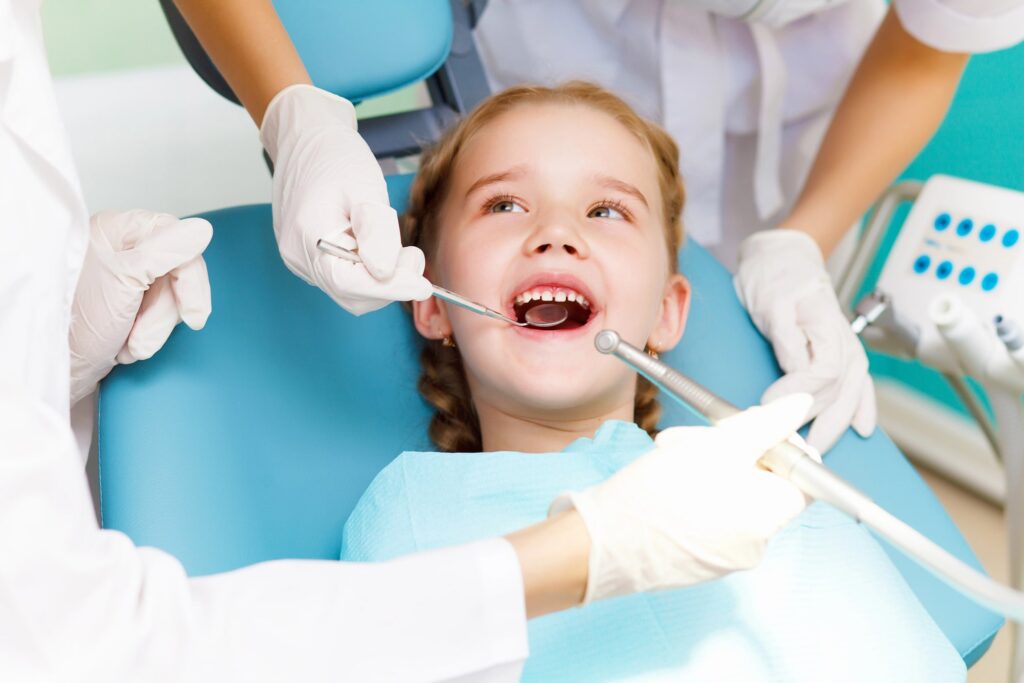This is a very common question that Dr. Backus can easily answer for you! The American Association of Orthodontists recommends that children visit an orthodontist by age 7 to determine if early orthodontics will be needed. Our entire team at Backus Smiles enjoys helping parents understand their child’s individual needs by providing an orthodontic examination & consultation. After the consultation, two viable options will be offered: Early Orthodontics or Observation. Early orthodontics involves some type of active orthodontic treatment to correct an imminent problem. Observation is a process whereby Dr. Backus will monitor the growth and development your child’s teeth and jaws until the time that active orthodontic treatment is needed. Contact our Mountain Brook, AL children’s orthodontics team today for an examination and consultation for your child!
Dr. Backus will evaluate many different conditions to help determine if your child will benefit from early orthodontic care:
• Oral habits: Typically this involves a thumb or finger sucking habit. The front teeth will look like there is a space in between the top and bottom row (referred to as an open bite) or will look like there is a long distance from front to back between the top and bottom front teeth (referred to as an over bite). Thumb or finger sucking can also lead to another habit called tongue thrusting or even more concerning, speech problems.
• Cross-bite: This condition occurs when the top teeth are positioned slightly inside of the bottom teeth. The top teeth should be positioned further out than the bottom teeth. Cross-bites can happen in the front or back of the mouth and can lead to uneven tooth wear, asymmetry of the face and jaws, and unfavorable jaw growth.
• Missing permanent teeth: Early detection of missing permanent teeth will help with long-term planning of how this area of the mouth should be treated. Decisions that Dr. Backus — who was awarded the James P. Bordelon, DDS Memorial Award for Clinical Excellence in Orthodontics — will help you understand whether to keep or extract baby teeth, the timing of any extraction procedure, and ultimately whether closing the spaces after extractions or planning for implants later in life is a better option for your child. As each child is different, the treatment plan for your child will be very specialized.
• Under-bite: This condition occurs when the front top teeth sit behind the front bottom teeth and can indicate a jaw growth problem or a tooth displacement problem. Treatment for an under-bite focuses on positive jaw growth and/or preventing further tooth, bone, and gum loss.
• Excessive overbite: This condition occurs when the front top teeth are further forward in the mouth than the front bottom teeth and can indicate a jaw growth problem or a tooth displacement problem. Horizontal protrusion of the top front teeth leads to a higher risk of tooth damage because these teeth do not have the benefit of lip coverage protection to soften a blow your child might suffer during sports or play time.
• Excessive grinding: Also known as bruxism, this habit can lead to loss of tooth enamel on newly erupted permanent teeth. In some cases bruxism can cause headaches, muscle soreness, or TMJ problems.
• Early loss of primary (baby) teeth: When a baby tooth is lost early, crowding of the not yet erupted permanent teeth can occur, causing the permanent teeth to not have enough room to enter the mouth. Orthodontic treatment will include regaining or maintaining space to avoid permanent teeth from becoming impacted or “stuck” inside the bone and gums.
• Late loss of primary (baby) teeth: When a baby tooth does not become loose at the appropriate time, this can indicate that a permanent tooth is not in the correct place in the mouth, often leading to the tooth impaction. Treatment will include making space for the affected permanent teeth and providing a path for the permanent tooth to erupt into a healthy position in the bone and gums.
• Severe crowding: This condition indicates that the mouth is too small to allow the permanent teeth to all have enough room. Treatment can include increasing space inside the mouth, extraction of baby teeth at the proper time, and ultimately avoiding extraction of permanent teeth.
• Airway problems: If your child is having trouble breathing, correction of the jaws and teeth alignment can help them get the proper oxygen they need for healthy growth. Signs of an airway problem may include mouth breathing, snoring, sleep apnea, dark circles under the eyes, bed-wetting, and restless sleep. Treatment can include palate expansion, braces, aligners, improving tongue posture, and increasing nasal airflow.
• Poor self-esteem: If your child is suffering from anxiety or is self-conscious about their teeth (whether they are sticking out or have big gaps), early orthodontic treatment can not only correct the problem, but also increase your child’s self-esteem.
Connecting with an Orthodontist is so important to help identify and treat teeth and jaw problems at an early age. Our goal is to promote overall health and well being while creating amazingly beautiful smiles. Voted Homewood’s Best for four years, we are ready to extend our services to your family. Contact Backus Smiles Orthodontics today for your child!

